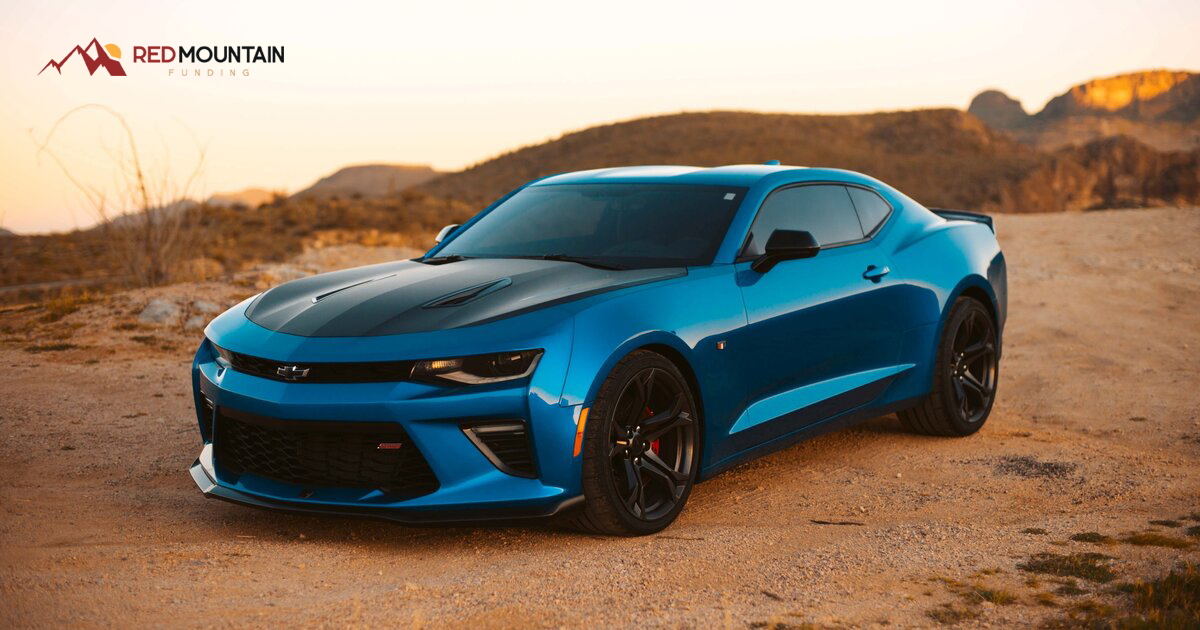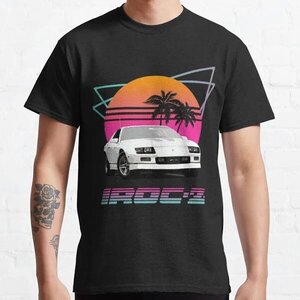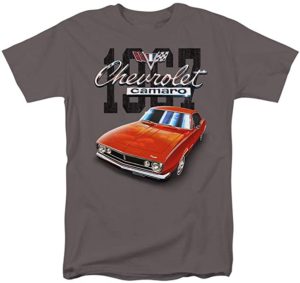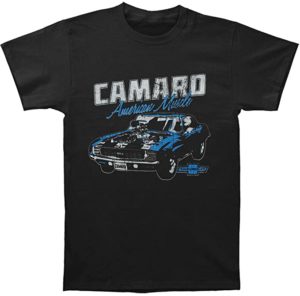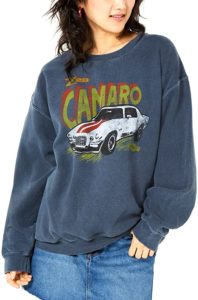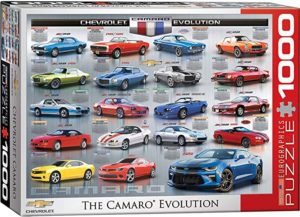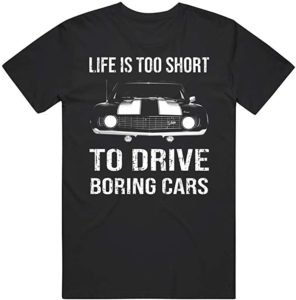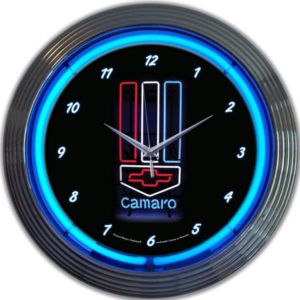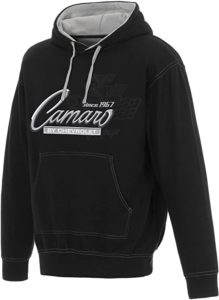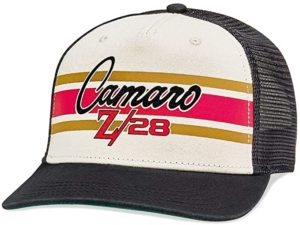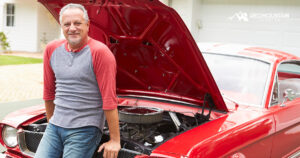Disclaimer: Some links on this page are affiliate links. We may receive a commission if you make a purchase through these links. See our full disclaimer here.
Are you searching for a brand-new car but have no idea where to begin? You’re certainly not alone—buying a new vehicle can be stressful. And, ideally, you’d like to get it right on the first try. No one wants to purchase a car without doing the proper research. The current market offers a plethora of options for any car shopper, but sometimes too many choices can make your selection even more of a challenge.
That being said, you still want to get the best car for your money and lifestyle; before you purchase any car, make sure that you’ve read all about it first. That way, you can feel genuinely confident in your purchase, and you won’t need to worry about another round of car shopping.
One popular possibility is the Chevy Camaro. Depending upon your priorities, you might be wondering a few things: Is a Camaro a cool car? Well, it IS Eddie Murphy’s favorite car, a 76 Camaro to be exact. That alone gives it a lot of cool points.
Or, maybe, you’re more focused on the practical side of the purchase. For instance, what kind of car is the Camaro? How large (or small) is it? What will be my top speed if I’m driving a Camaro? Has it earned its reputation as America’s muscle car?
To answer each of those questions (and more), we’ve compiled a detailed guide to this popular and reliable vehicle. This way, you can feel confident about your pick before you make the purchase.
The Camaro’s History
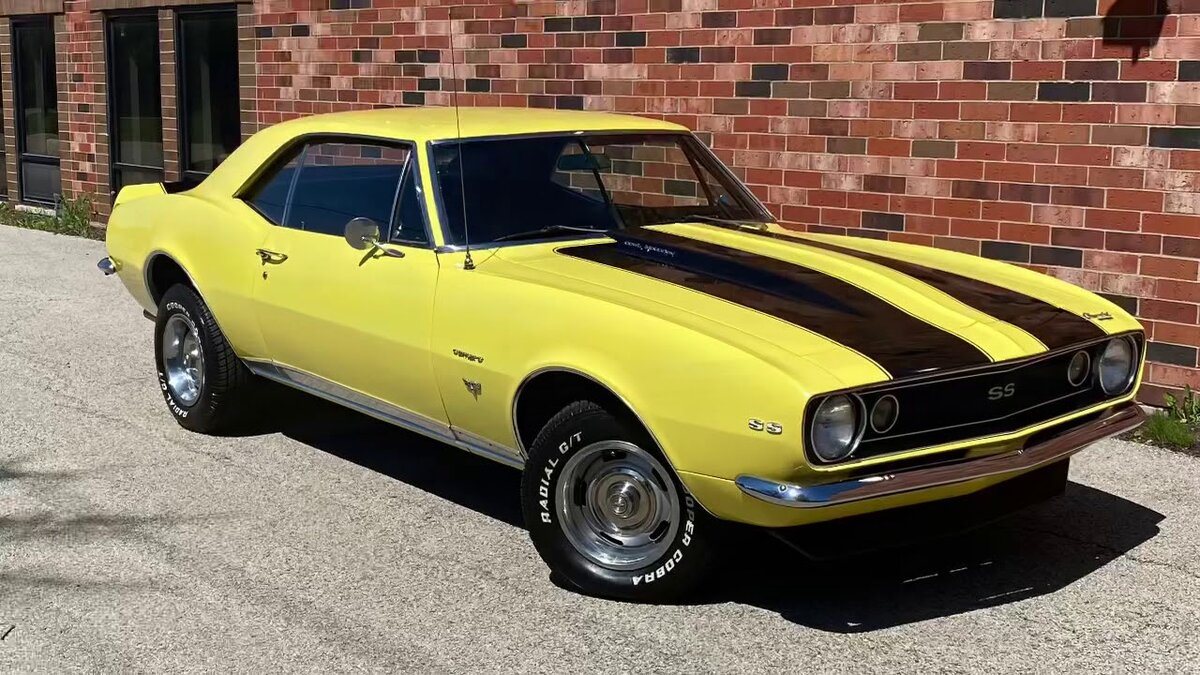
Image Credit: Auto Trader
So, what was the first year of the Camaro? The first generation of the Chevy Camaro debuted in 1967 and was manufactured until 1969. However, even before its announcement, rumors surrounding the Camaro had already begun to spread—although, at the time, it was known as the Panther.
Essentially, the rumor was that Chevy was preparing to release a competitor to the Ford Mustang, an extremely popular pony car. These initial rumors began to spread as early as 1965, although Chevy’s official announcement of the Camaro didn’t come until a year later.
America’s Muscle Car Makes Its Debut
The car received its name from (what was believed to be) a French slang term, meaning friend or pal. The inspiration behind this name came from an individual’s relationship with their car—if it’s a reliable vehicle, then the owner and their car can form a comradeship.
In September 1966, the first Chevy Camaro became available for purchase. This model was manufactured for the 1967 model year and was soon available at dealerships all over the United States. It ushered in the wave of the muscle car and had a reputation for helping drivers get attention. Buyers of this first-generation vehicle could choose between either a coupe or a convertible.
Once the first-generation Chevy Camaro had gone on sale, the second generation’s development was swiftly underway. Chevy was determined to design a car with some of the best handling and styling in the game to continue competing with the Ford Mustang.
However, the rounded sheet metal of the second-generation Camaro offered the manufacturer some new challenges (related to both production and engineering), which ended up delaying the process. As such, Chevy didn’t debut this car until February 1970—for this reason, this model is often referred to as the “1970½,” due to its late release. Still, it was an unofficial designation and Chevy never used it in an official capacity.
This updated Camaro was heavier than the original design. Several significant tweaks were also made to the vehicle to improve performance and reliability. Additionally, the second-generation Camaro is the only version of the vehicle that wasn’t available as a convertible.
Based on the changing federal bumper standards, the Camaro needed to be restyled yet again, in 1974. As a result, the length of the Camaro grew by around seven inches at this time. Also, by this time, several other popular pony cars were discontinued, while the Camaro continued to rise in popularity. The Mustang had since been downsized, becoming the Mustang II.
As the number of competing vehicles on the market shrunk, the Camaro grew increasingly popular, especially during the late 1970s. However, sales continued to rise as Chevy tweaked and improved upon the early design.
Come the 1982 model year, the third generation of the Chevy Camaro was introduced. The styling of this vehicle was cleaner than ever, with a squared-off design. The third-generation Camaro was also available in three models: the Berlinetta, Sport Coupe, and Z28.
The fourth generation of the Camaro debuted several years later, in 1993. This new version of the classic vehicle featured some notable differences and adjustments compared to the previous generation. For instance, the fourth-generation Camaro’s suspension was heavily revised, even though the live rear axle was kept in place.
However, at this point, sales of the Camaro were on a steady decline. Realizing this, Chevy initially planned to halt production of the Camaro in 2002—still, this wasn’t the end of the Camaro. Nearly a decade later, in 2010, the fifth generation of the Chevy Camaro was introduced. Then, in 2016, the sixth generation came into being. The Camaro is still in production to this day—although, due to falling sales, it is expected to be discontinued in 2023.
Why Is a Camaro Called a Camaro?
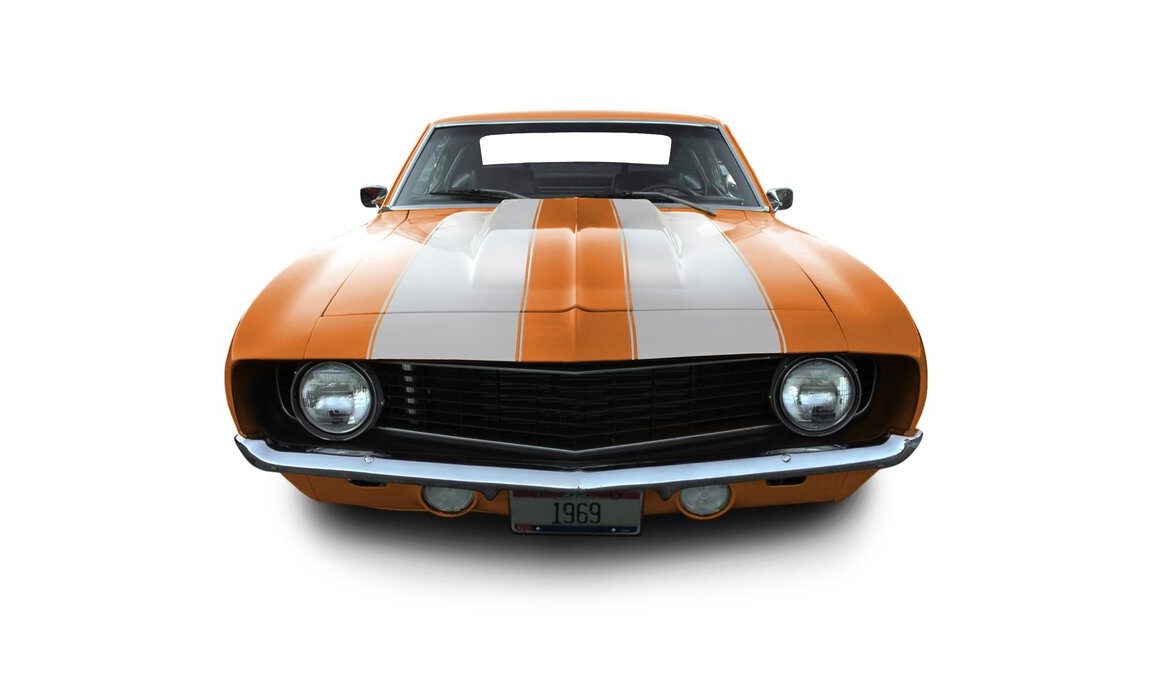
Keep in mind that, initially, the Camaro wasn’t even called the Camaro—it was first conceptualized as Project Panther as a swift response to the incredible popularity of the Ford Mustang. In fact, Chevy created a mysterious campaign that included press releases suggesting that they were developing a car that could take down the Mustang – named after a cat. As a result, this was the name it was known by for the majority of its initial development.
However, over time, Chevy refined this name. In part, this was done to adhere to the brand’s tradition of naming its cars using words beginning with “C.” In June 1966, the true name of the vehicle was unveiled. This occurred during the first-ever coast-to-coast conference call, spanning 14 cities.
Chevy’s general manager at the time, Pete Estes, announced the name. Estes provided those involved in the call with a detailed overview of the vehicle and used the time to publicly say its name for the first time: The Chevrolet Camaro.
The origins of the name Camaro are pretty simple. According to a French-English dictionary looked at by the staff at Chevy, “camaro” is a slang word that roughly translates to “friend” or “pal.” Ideally, according to Chevy, this is the kind of relationship an individual should strive to have with their car—it should be a bond based on close companionship, where the owner can rely upon their vehicle.
4 Chevy Camaro Facts
Now that we’ve covered some of the history behind the Chevy Camaro, let’s move on to some interesting details. Of course, many fun and interesting facts surround the Camaro—however, here are just a few of our favorites.
1. You Can Technically Thank Ford for the Conceptualization of the Camaro
When the Ford Mustang was first released, no one expected it to be as much of a hit as it was—well, except Ford, of course. This put all Ford’s competitors in a complicated position, where they were scrambling to create a vehicle that could successfully rival the Mustang.
The first-generation Camaro was a direct result of that rush. Chevy knew that it needed to create a fast, cheap vehicle that was popular with the younger crowd at the time—and the Ford Mustang dominated these markets just before the Camaro’s release.
So, even though it’s an indirect connection, you can technically thank Ford for the creation of the Camaro—if it hadn’t released the widely popular Mustang, Chevy might never have had the inspiration needed to design and release the Camaro.
2. The Cost of a First-Generation Camaro
Wondering how much a Chevy Camaro cost in its early days? In the beginning, the Camaro was priced at around $2,466. Now, that might not seem like much, but keep in mind that in today’s world, that’s the equivalent of approximately $19,000. Even still, the Camaro was intended to be an affordable vehicle, compared to others on the market.
3. Some Early Camaro Options Were a Bit Unusual
So, you’re probably wondering what we mean by this, exactly. For perspective, keep in mind that some of the more typical options car owners in the 1960s could expect to receive were air conditioning, an AM/FM radio, a tachometer, and so on.
However, the Camaro had some slightly more exciting options. If any buyers decided to custom order their vehicle, they could request some additions that weren’t as conventional. For instance, they could order a fold-down rear seat.
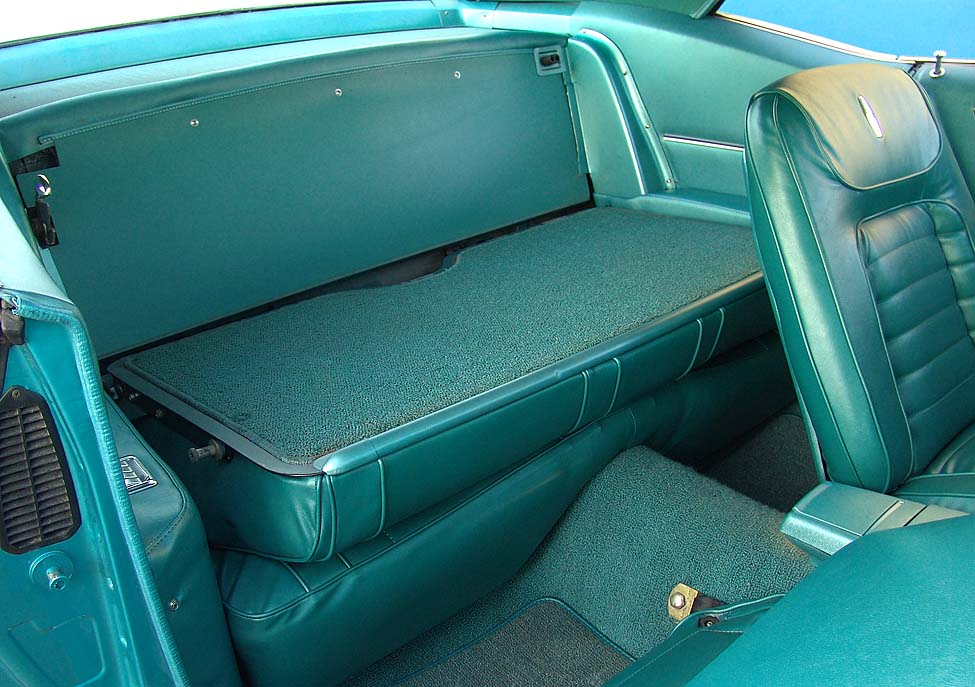
Image Credit: camaros.net
Or, perhaps even more unusual, the 1969 model Camaro could be ordered with a liquid aerosol tire chain. Essentially, this add-on allowed car owners to press a button on their dashboard, and the rear tires of their vehicle would be enveloped in a de-icing aerosol spray. The canisters that contained this spray were located above the car’s wheel wells.
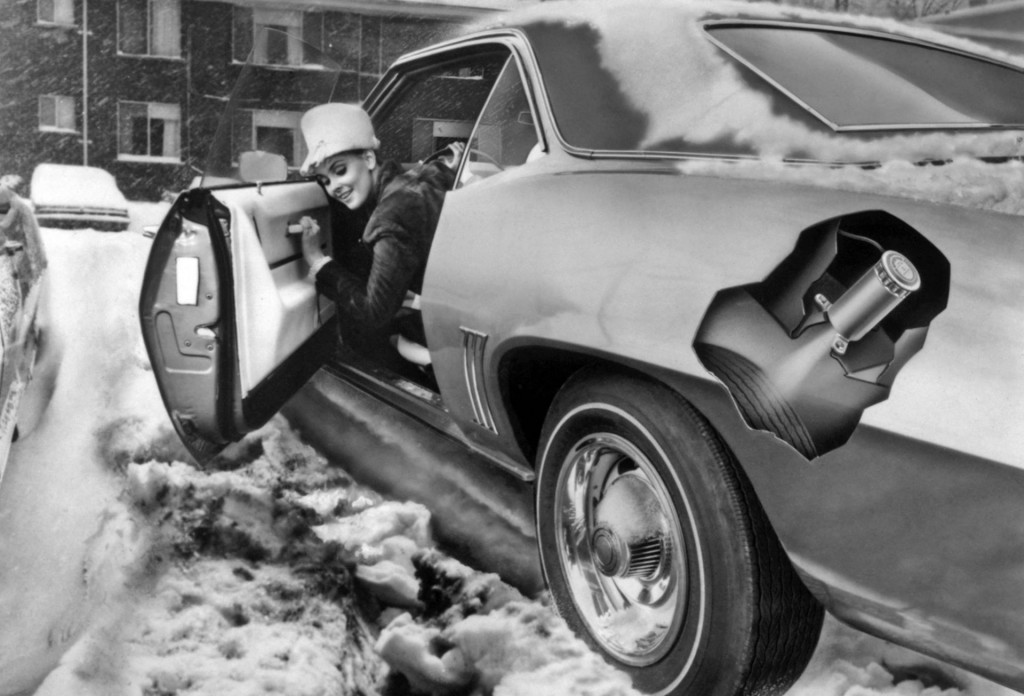
Image Credit: Motor Authority
4. The Early Camaro Had Seven Engine Options
When Chevy first released the Camaro, the goal was to go above and beyond—after all, it was trying hard to compete with the wildly popular Mustang. One decision Chevy made to help it stand out was the inclusion of seven engine options. Keep in mind that, at the time, this was more engine options than was offered by any other car manufacturer. This is more engine options than the modern-day Camaro offers.
What Body Style Is a Camaro?
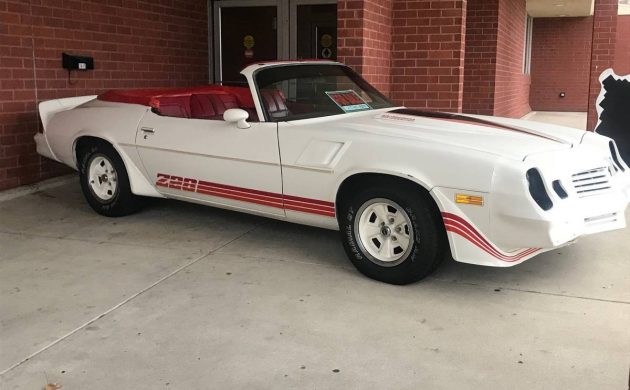
Rare Convertible: 1981 Chevrolet Camaro Z28 Convertible Image Credit: Barn Finds
The Chevy Camaro has been manufactured with two body styles: the two-door coupe and the two-door convertible. The convertible body style was unavailable for several years, however, from 1969 until 1987.
What Is the Camaro Known For?
Over the many years it has existed, the Chevy Camaro has become well known for several reasons.
For instance, individuals might know the Camaro as the long-running vehicle that was discontinued in 2002, only to be manufactured again several years later. When the Camaro turned 35, Chevy released a particular edition model of the vehicle. However, rather than celebrating this accomplishment, Chevy was too busy watching sales of the car plummet. This eventually led to the vehicle being discontinued—or so it seemed.
Still, Camaro enthusiasts weren’t quite ready to accept the vehicle’s end. Due to all this enthusiasm and the encouragement, the vehicle soon went back into production. To this day, it is still being built.
How Fast Can a Camaro Go?
The top speed of a Camaro depends upon the model—it can vary a bit from year to year. If we’re looking at the most recent model (the 2020 Camaro), the top speed is about 198 miles per hour.
Now, maybe you’re wondering which Camaro is the fastest, of all the models and generations, over the years? In that case, the fastest Camaro is the 2011 SLP ZL1. This model is capable of hitting 60 miles per hour in just about three seconds.
Want a clearer idea of how fast that is, exactly? Think of it this way: The slowest Camaro was the 1975 edition of the vehicle. This vehicle was only capable of pumping out 105 horsepower, compared to the 2011 vehicle’s 750 horsepower. Plus, the 1975 Camaro takes over 10 seconds to hit 60 miles per hour.
Are Camaros Reliable?
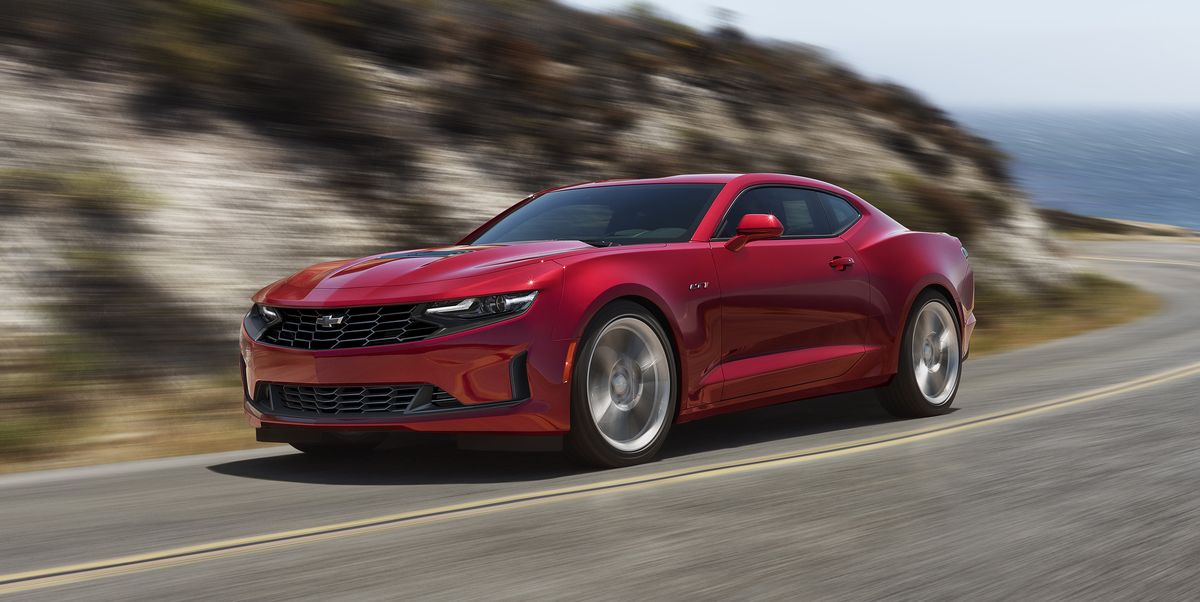
Image Credit: Car and Driver
In terms of reliability, the Chevy Camaro has fluctuated a bit over the years. Therefore, depending on which year you purchase, you could expect significantly different reliability levels. Which years were the most reliable for the Camaro, and which were the least?
The most recent model—the 2020 Chevy Camaro—seems to fall short in terms of reliability. This model ranked poorly with Consumer Reports, especially concerning reliability. Overall, the vehicle received 53 points out of a possible 100.
However, the 2020 Camaro also received a one out of five rating regarding reliability. This means it received the lowest possible reliability score—this wasn’t always the case, as diehard Camaro enthusiasts are all too aware.
In particular, the 2020 Camaro leaves much to be desired in terms of visibility. This could make it difficult for drivers to see important road signs and signals, such as stoplights. Rear-facing visibility is especially limited, which can pose a safety hazard for drivers—both at the wheel and on the road around them. Remember that, despite the severity of these issues, they haven’t always existed for the Chevy Camaro.
Further, the 2017 and 2018 models of the Camaro aren’t going to be your best bet if you’re seeking reliability. Which recent models of the Camaro should you opt for if reliability is one of your priorities? It’s probably best to consider the 2013 or 2015 model.
Which Year Camaro Is Best?
Maybe you have decided that the Chevy Camaro is the car for you. If so, that’s great! However, the next step is determining which year or model you’d like to purchase—remember, there’s a good deal of variability between models. Research the properties and features of each Camaro year to determine which option makes the most sense for you.
Including some of the more classic Camaro models, here’s a brief list highlighting some of the best.
1. 1967 Chevrolet Camaro

Image Credit: Motorious
Of course, we had to include the first year the Camaro was built. Had it not been for this car, the lengthy history of the Chevy Camaro would never have been set in motion. We have to give this model some substantial credit for making such a quick and powerful impact on the car-buying market.
In addition, the 1967 Camaro features several engines—one of which is a high-powered V8 engine, creating an enormous 295 horsepower.
Start Shopping: 1967 Chevy Camaros
2. 2012 Camaro ZL1

Image Credit: Autoblog
For this next one, let’s jump ahead a number of years. What makes this 2012 model of the Camaro so special?
Chevy made sure the Camaro’s fifth generation had a strong start with this particular release. The Camaro ZL1 comes standard with a V6 engine. Impressively enough, this Camaro model can pump out an enormous 580 horsepower; it can also reach an incredible top speed of 184 miles per hour.
Clearly, the Camaro was back, and it was stronger than ever before.
Start Shopping: Chevy Camaro ZL1s
3. 2010 Camaro SS
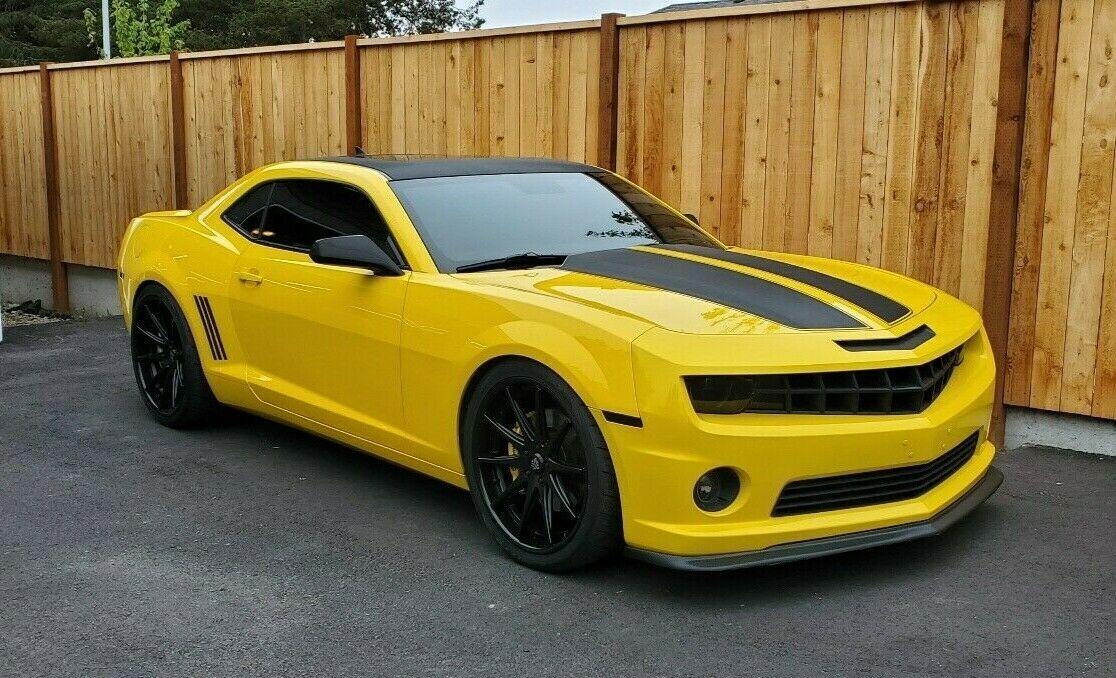
Image Credit: Auto Evolution
Not only is the design of this model particularly beautiful—simple and sleek—but it’s also a powerful and reliable vehicle. For instance, the Camaro SS can reach speeds of up to 155 miles per hour.
Start Shopping: 2010 Chevy Camaros
4. 1985 Camaro IROC-Z
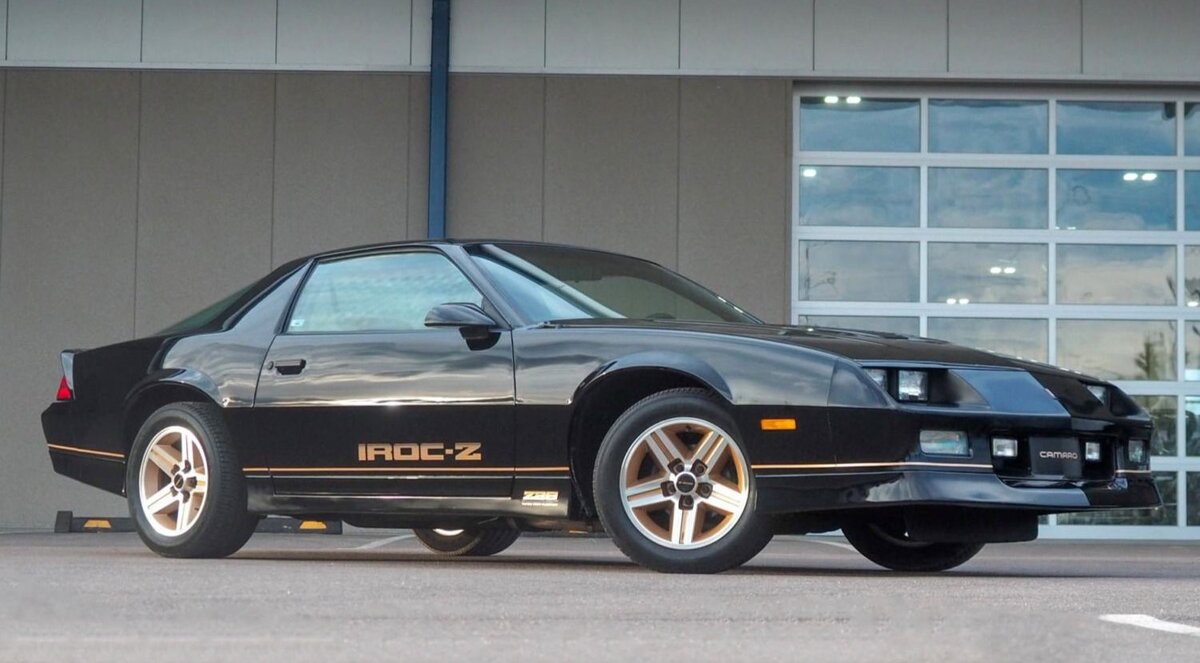
Image Credit: Motorious
Over the years, the Chevy Camaro seemed to have lost sight of its initial muscle car design—in that sense, the IROC-Z was one of the Camaro’s earliest comebacks. With this particular model, the Camaro was able to get back to its classic muscle car roots, perhaps for the first time in several years. Plus, it’s a powerful and reliable vehicle.
Start Shopping: Chevy Camaro IROC-Zs
Is Chevy Discontinuing the Camaro?
Since the crest of the millennium, the Chevy Camaro has faced some complications—it just hasn’t been selling as well as it used to in its earlier days on the market. As a result, the car hit an especially severe low point in 2002, at the end of the fourth generation. This is the first time when, seemingly, the Camaro was going to be discontinued—and, for a while, this indeed appeared to have been the case.
From 2002 to 2009, the Camaro was no longer being manufactured. However, that wasn’t quite the end of this vehicle. Soon enough, the Camaro was back in production, and the fifth generation was being released.
Naturally, this was an enormous relief for Camaro enthusiasts. But, unfortunately, even after its release, the sales of the Camaro seemed to decline quickly. In more recent years, it’s become apparent: The Chevy Camaro isn’t going to be around much longer—the car is simply past its prime.
The sixth generation will remain in production until 2023. It’s impossible to say what the Camaro’s future will be. While this could end up being just enough hiatus from production, it’s also possible that, in 2023, the Chevy Camaro will be officially discontinued—permanently, this time.
Camaro Merch
I’m a kid at heart disguised as an auto researcher and business owner. I’ve always enjoyed providing insight in the form of reviews (anime, video games, autos, etc.) When I’m not researching, I’m spending time with my family, driving my Dodge Challenger, riding my motorcycle, and finding new entrepreneurial pursuits.
